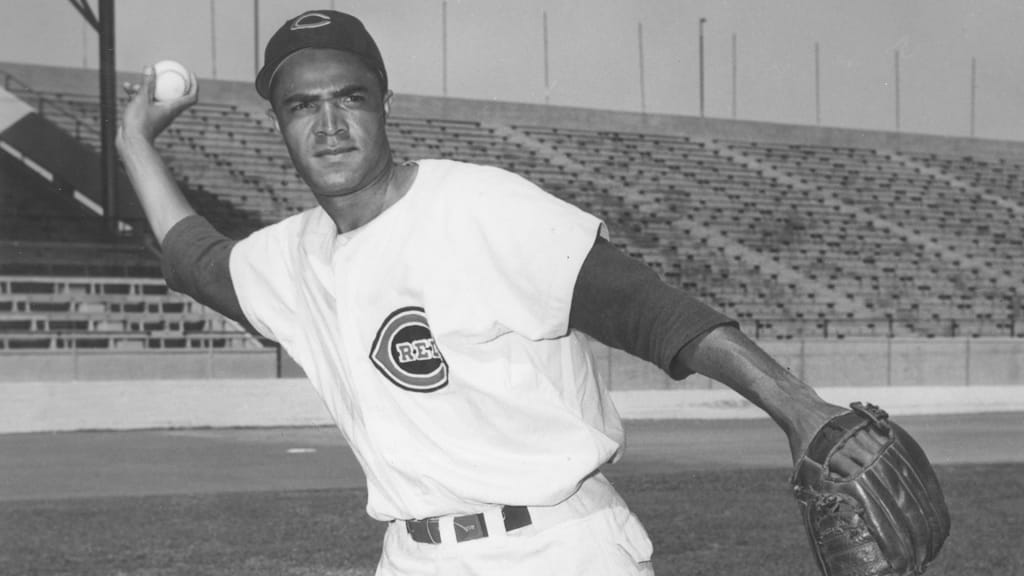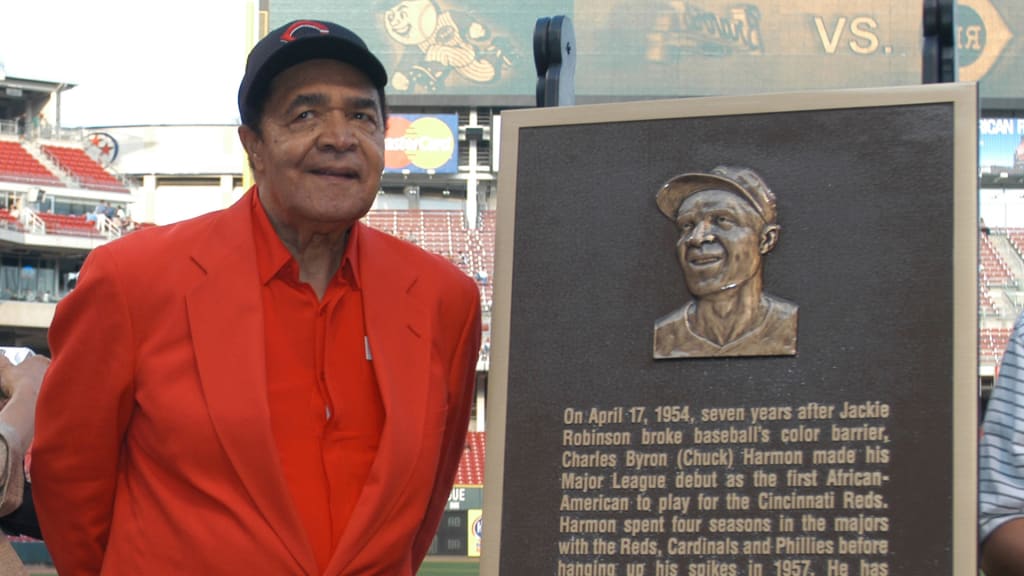
The success of Jackie Robinson in his rookie season with the Brooklyn Dodgers in 1947 removed any doubt that Black baseball players could achieve at a high level in the Major Leagues. The triumph of Robinson’s inaugural season resulted in the collapse of the barriers that had stood in the way of baseball’s integration for over 50 years. By the midpoint of the '47 season, Larry Doby had become the second Black player in baseball when he broke in with the Cleveland Indians. Despite the success of Robinson, Doby and a host of others, it took over a decade before each Major League club welcomed a Black player to its roster.
In Cincinnati, integration came in 1954 with Chuck Harmon. A native of Washington, Ind., Harmon excelled at both baseball and basketball in high school, playing a key role on two Indiana state basketball championship teams and earning All-America honors in '43 with the University of Toledo squad that lost to St. John’s in the championship game of the National Invitation Tournament. While a student at Toledo in '47, Harmon caught the eye of a representative of the Negro American League’s Indianapolis Clowns. Harmon was looking for a summer job at the time, and he signed on to play for the Clowns. After only five games, Harmon left the Clowns to take a job with the city of Toledo’s Recreation Department. Although his stay with Indianapolis was brief, Harmon was there long enough to earn an alias bestowed upon him by Clowns legend Reece “Goose” Tatum. The future Harlem Globetrotter christened Harmon “Charlie Fine” to protect Harmon’s collegiate eligibility.
In July 1947, Harmon returned to baseball when he was signed by the St. Louis Browns. Assigned to the Browns’ Gloversville, N.Y., club in the Canadian-American League, Harmon became the first Black player to appear in that circuit. Over the next five seasons, Harmon played for a series of Minor League clubs, distinguishing himself at every stop. A versatile player, Harmon played both corner-infield positions as well as the outfield. In '52, Harmon was acquired by the Reds. A year later, he became the first Black player to play for the Tulsa Oilers of the Texas League. A successful campaign at Tulsa coupled with a strong showing in the Puerto Rican League that winter helped convince the Reds that Harmon was ready for the big leagues.
Harmon made the 1954 Reds roster as a utility player. On April 17, in a game against the Braves in Milwaukee, Harmon was called on to pinch-hit. When he stepped into the batter’s box at County Stadium, Harmon became the first African American to wear a Reds uniform in a regular-season game. Prior to Harmon’s appearance, Nino Escalera, a Puerto Rican of African descent, also appeared in the game as a pinch-hitter for the Reds. A number of lighter-skinned Latin players had reached the Majors prior to Escalera’s appearance but the dark-skinned Escalera likely would not have been given an opportunity prior to the arrival of Robinson in '47.
Harmon has often been asked whether he or Escalera should receive credit for being the Reds’ “first.”
“Whenever people ask me about it, the way I distinguish it is: I was the first African American; Nino was the first Black. I don’t know what difference it makes; but for history’s sake, they might as well get it right.”
The Reds traded Harmon to the Cardinals in May 1956. After playing a season in St. Louis, he was dealt to the Phillies, for whom he played the final two seasons of his career. Collectively, Harmon appeared in 289 Major League games, playing all three outfield positions, third base and first base. He continued to play professionally with a series of Minor League clubs through '61, when he retired at age 37.
Harmon stayed involved in sports after his retirement, working as a scout for the Indians and Atlanta Braves, as well as the NBA’s Indiana Pacers. He settled in Cincinnati, where he began a long career as an administrative assistant with Ohio’s First District Court of Appeals.
Harmon’s trailblazing place in Reds history was acknowledged in 1997, when the city of Cincinnati decreed May 15 “Jackie Robinson/Chuck Harmon Day.” The special day commemorated not only the 50th anniversary of Robinson’s '47 debut, but also marked the 50th anniversary of Harmon signing with the Browns.
After his playing days, Harmon remained an active and visible part of Cincinnati and the Reds all the way up to his passing in March 2019 at age 94. A plaque that describes Harmon’s historic place in club history can be found just inside the main gates at Great American Ball Park. However, many fans talked to Harmon directly about his experience, given that he was a frequent attendee at Reds games and club events, such as the annual Redsfest fan convention each December. In addition, Harmon appeared as a guest at functions, from library panel discussions to golf tournaments to charity banquets. Harmon was also one of the founding members of Seniors With A Purpose (SWAP), a group comprised of Negro Leagues veterans living in the Cincinnati area that strives to use baseball to improve the lives of inner-city youth.

Over the years, despite the numerous accolades and honors he received, Harmon was resolutely humble about his place in baseball history. When asked about being the first African American player in Reds history and one of the first in baseball history, Harmon often reduced his part in the story to that of a simple tool of fate. Giving a slight twist to longtime Negro Leaguer Buck O’Neill’s famous line, “I was right on time,” Harmon would simply say, “I was in the right place at the right time.”

